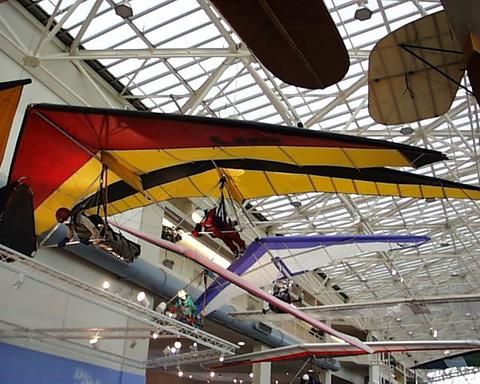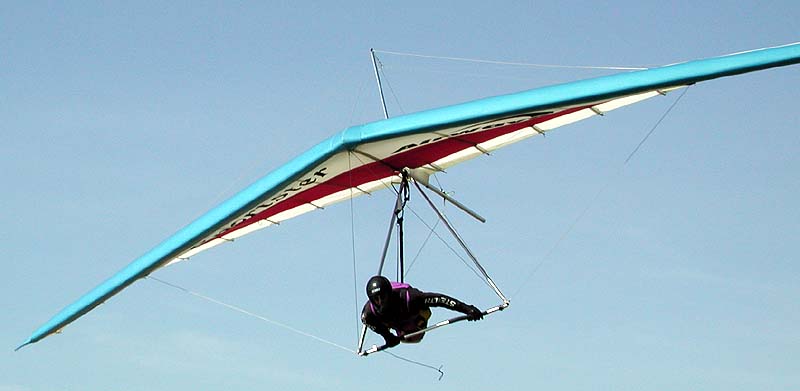New Technologies
Hang gliding has come a long way since the early days
of wooden frames. Nowadays a hang glider's frame is made of aluminum
tubing, which allows for a very rigid wing. This allows for better
airflow because the sail isn't flapping and generates more efficient lift.
Some frames are even made of carbon fiber. These new materials are also
much lighter than those of earlier models. These newer and more rigid
frames allow for less support cables and tubes. This, as I mentioned
earlier on the drag
page, allows for less drag and longer flights.
Another new and effective technology is wing design. New and better wings are being developed that have incredible gliding ratios. This ratio is expressed as the length you travel horizontally to the length you fall vertically. Early gliders were not very efficient and some only had ratios of about 1:1, meaning they fell one foot for every foot travelled forward. In today's hang gliders, ratios of 10:1 or better are not uncommon. These new designs are allowing for longer flights. Now flights of 200 to 300 miles are more and more common, taking up to 7 hours sometimes. The world record was set in July, 2001 by Manfred Ruhmer, who flew his hang glider 432 miles in 10.5 hours.
Here are some photographs of new gliders:

Another new and effective technology is wing design. New and better wings are being developed that have incredible gliding ratios. This ratio is expressed as the length you travel horizontally to the length you fall vertically. Early gliders were not very efficient and some only had ratios of about 1:1, meaning they fell one foot for every foot travelled forward. In today's hang gliders, ratios of 10:1 or better are not uncommon. These new designs are allowing for longer flights. Now flights of 200 to 300 miles are more and more common, taking up to 7 hours sometimes. The world record was set in July, 2001 by Manfred Ruhmer, who flew his hang glider 432 miles in 10.5 hours.
Here are some photographs of new gliders:

Photo courtesy of: Seattle's
Museum of Flight



Photo courtesy of: Seattle's Museum of Flight

Photo courtesy of: Hang Gliding Pictures
More cool hang gliding pictures are available at the
links above if you are interested.